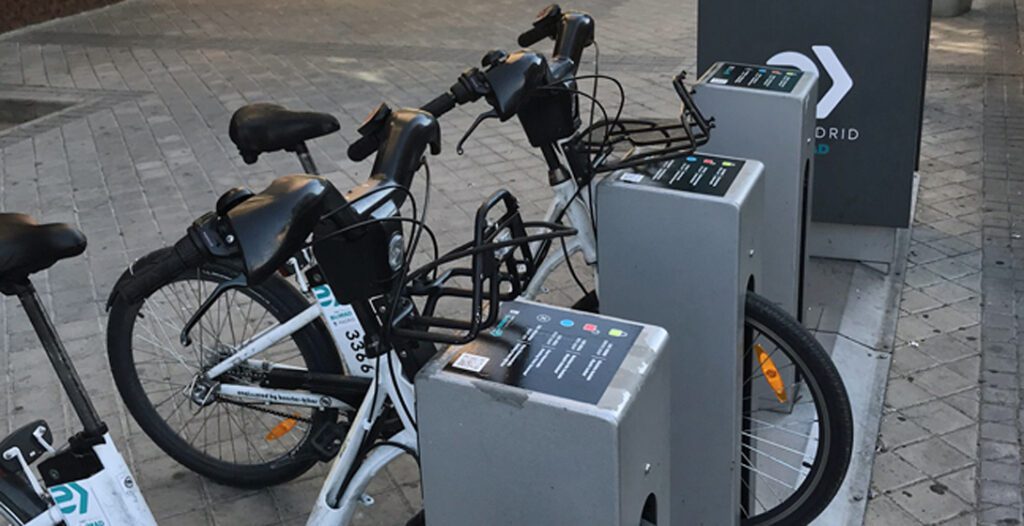Powering Sustainable Mobility
E-bike charging stations in urban areas are revolutionizing how cities approach sustainable transportation. As electric bikes (e-bikes) gain popularity for their eco-friendly and efficient nature, the demand for accessible and reliable charging infrastructure has surged. These stations provide urban cyclists with convenient access to power, enabling longer rides, reducing range anxiety, and supporting the shift toward greener mobility. This article explores the rise of e-bike charging stations in urban areas, their benefits, challenges, and the role they play in shaping the future of city commuting.
The Rise of E-Bikes in Urban Environments
E-bikes have become a staple in urban transportation, offering an affordable, low-carbon alternative to cars and public transit. With their ability to cover longer distances and navigate traffic with ease, e-bikes are particularly appealing to commuters, delivery workers, and recreational riders. However, the limited battery range of e-bikes—typically 20–100 miles depending on the model—necessitates a robust network of e-bike charging stations in urban areas to support their widespread adoption.
Why E-Bike Charging Stations Matter
E-bike charging stations in urban areas address a critical need: ensuring that riders can recharge their batteries conveniently and safely. Unlike electric cars, which require high-powered chargers, e-bikes typically use standard 120V or 240V outlets, making charging stations relatively simple to install. However, the strategic placement of these stations in city centers, transit hubs, and recreational areas is key to their effectiveness. By providing accessible charging points, cities can encourage more residents to adopt e-bikes, reducing traffic congestion and greenhouse gas emissions.

Environmental and Economic Benefits
E-bikes are significantly more energy-efficient than cars, with a single charge costing as little as 5 cents on average in the U.S., according to Sustainable America. This translates to annual charging costs of around $21.17 for regular users. E-bike charging stations in urban areas further enhance this sustainability by integrating renewable energy sources, such as solar panels, and reducing reliance on home charging, which can strain residential power grids. Economically, these stations attract cyclists to local businesses, boosting foot traffic and supporting urban economies.
Types of E-Bike Charging Stations
E-bike charging stations in urban areas come in various forms, each designed to meet specific user needs and infrastructure capabilities. Below are the main types of charging stations and their features.
Public Charging Stations
Public e-bike charging stations are typically located in high-traffic areas such as city centers, parks, and transportation hubs. These stations often feature multiple charging ports (6–12 ports) and are compatible with various e-bike brands. For example, Saris Infrastructure offers stations with secure lockers and 120V/240V outlets, allowing users to plug in their personal chargers while securing their bikes with locking arms. These stations are ideal for commuters and casual riders who need a quick charge during their daily routines.
Solar-Powered Stations
Some e-bike charging stations in urban areas are powered by solar panels, offering an eco-friendly charging solution. These stations convert sunlight into electricity, storing excess power for use during low-light conditions. Vélo Galaxie, a leader in urban bike infrastructure, highlights the sustainability of solar-powered stations, which reduce reliance on fossil fuel-based grids and align with cities’ carbon-neutral goals.
Battery-Swapping Stations
Battery-swapping stations, like those piloted by NYC DOT with Popwheels and Swobbee, allow users to exchange depleted batteries for fully charged ones. These stations are particularly popular among delivery workers who need quick turnaround times. The NYC DOT’s pilot program, which ended in September 2024, demonstrated strong participation and reduced the risks associated with home charging, such as fire hazards from uncertified batteries.
Private and Commercial Stations
Businesses, workplaces, and private properties are increasingly installing e-bike charging stations to cater to employees, customers, or tenants. These stations may require a fee or subscription and often offer faster charging speeds through Level 2 chargers (up to 4kW). Hotels, campsites, and retail centers are also adopting these stations to attract e-bike users, enhancing their appeal as bike-friendly destinations.
Strategic Placement of Charging Stations
The effectiveness of e-bike charging stations in urban areas depends on their strategic placement. Cities are prioritizing locations that maximize accessibility and convenience for diverse user groups.
City Centers and Commercial Areas
Charging stations in city centers and shopping districts encourage e-bike use for errands and commuting. For example, bike-energy reports that businesses with charging stations experience increased customer dwell time and sales, as cyclists stop to charge while exploring nearby shops or cafes.
Transportation Hubs
Train stations, bus stops, and metro stations are ideal locations for e-bike charging stations in urban areas. These hubs facilitate intermodal travel, allowing cyclists to recharge while transferring between modes of transport. Cities like Amsterdam and San Francisco have integrated charging stations into their transit networks, making e-bikes a seamless part of urban mobility.
Urban Parks and Leisure Spaces
Parks and recreational areas are popular spots for charging stations, catering to recreational riders and tourists. These stations often combine charging with bike racks or lockers, ensuring security while cyclists enjoy outdoor activities. The Sustrans National Cycle Network in the UK, for instance, features charging stations along scenic routes like the Devon Coast to Coast trail.
Challenges in Implementing E-Bike Charging Stations
While e-bike charging stations in urban areas offer significant benefits, their implementation faces several challenges.
Lack of Standardization
One major hurdle is the lack of standardized connectors across e-bike brands. Unlike electric cars, which use a limited number of connector types, e-bikes have a wide variety of charging ports (e.g., RCA, XLR, Bosch, Shimano). This requires stations to either support multiple connector types or rely on users bringing their own chargers. Spelsberg’s BCS charging stations address this by incorporating manufacturer-specific chargers, but universal solutions are still needed.
Infrastructure Costs and Maintenance
The cost of installing e-bike charging stations varies widely. Basic units in India, for example, start at around 1 lakh ($1,200 USD), while advanced stations with fast-charging capabilities can cost up to 5 lakh ($6,000 USD). Maintenance is another concern, as stations must withstand weather conditions and heavy use. Regular inspections of cables, outlets, and circuit breakers are necessary to prevent malfunctions.
Accessibility in Rural vs. Urban Areas
While urban areas have denser charging networks, rural regions often lack infrastructure, limiting e-bike use for long-distance travel. Apps like PlugShare and ChargeHub help locate stations, but their coverage is less reliable outside cities. Portable chargers or backup batteries remain essential for rural riders.
Safety Considerations
Safety is a critical factor in the design and use of e-bike charging stations in urban areas. Improper charging practices, particularly with uncertified batteries, have led to fire hazards, as seen in incidents involving food delivery workers in New York City. To mitigate risks:
-
Certified Equipment: Use stations with GFCI outlets and manufacturer-approved chargers to prevent electrical hazards.
-
Battery Monitoring: Advanced stations, like those from bike-energy, monitor charging to protect batteries from overcharging or overheating.
-
Secure Design: Lockable compartments and bike-locking arms, as offered by Saris Infrastructure, ensure bikes and batteries remain safe during charging.
NYC DOT’s pilot program highlighted the importance of moving charging out of homes to reduce fire risks, emphasizing the need for safe, public charging infrastructure.
How to Use E-Bike Charging Stations
Using e-bike charging stations in urban areas is straightforward, but proper etiquette and preparation are key.
Steps for Charging
-
Locate a Station: Use apps like PlugShare, ChargeHub, or bike-energy’s app to find nearby stations. These apps provide real-time information on availability, connector types, and user reviews.
-
Check Compatibility: Ensure your e-bike’s charger or battery is compatible with the station’s outlets or connectors. Carry your charger if the station requires it.
-
Connect Securely: Plug in your bike or battery, ensuring a secure connection. Check for indicator lights or screens to confirm charging has started.
-
Secure Your Bike: Use the station’s locking mechanism or your own lock to protect your bike during charging.
-
Monitor Charging Time: Most e-bike batteries take 2.5–6 hours for a full charge, though fast-charging stations can reduce this to 1–2 hours.
Charging Etiquette
-
Ask Permission: If charging at a cafe, library, or private business, always seek permission before plugging in.
-
Be Considerate: Avoid monopolizing charging ports, especially at multi-port stations, to accommodate other users.
-
Maintain Safety: Inspect cables for damage and avoid using unverified chargers to prevent battery damage.
The Future of E-Bike Charging Infrastructure
The future of e-bike charging stations in urban areas is promising, with innovations and policies driving expansion.
Technological Advancements
Emerging technologies, such as contactless charging and solar-powered stations, are making charging more efficient and sustainable. Massachusetts and Oregon are leading the way with universal and solar-powered chargers, while cities like Pittsburgh are piloting mobility hubs that integrate e-bike and e-scooter charging.
Policy and Investment
Governments are investing in charging infrastructure to support e-bike adoption. NYC’s Charge Safe, Ride Safe Action Plan, for example, promotes safe charging through public stations and battery-swapping programs. Partnerships with organizations like the NYC Fire Department ensure safety standards are met.
Integration with Existing Infrastructure
Adapting electric vehicle (EV) charging stations for e-bike use is a growing trend. With adapters, e-bikes can tap into Level 1 or Level 2 EV chargers, though safety concerns remain due to differing power requirements. Dedicated e-bike stations, like those from Vélo Galaxie, are better suited for safe and efficient charging.
Top Cities Leading the Way
Cities worldwide are embracing e-bike charging stations to promote sustainable mobility. Amsterdam, with its extensive cycling infrastructure, has integrated charging stations into transit hubs and commercial areas. San Francisco’s bike-friendly policies include solar-powered stations in parks and shopping districts. In the UK, the Sustrans National Cycle Network offers charging points along long-distance routes, supporting both urban and rural riders.
Environmental and Economic Benefits
E-bikes are significantly more energy-efficient than cars, with a single charge costing as little as 5 cents on average in the U.S., according to Sustainable America. This translates to annual charging costs of around $21.17 for regular users. E-bike charging stations in urban areas further enhance this sustainability by integrating renewable energy sources, such as solar panels, and reducing reliance on home charging, which can strain residential power grids. Economically, these stations attract cyclists to local businesses, boosting foot traffic and supporting urban economies.
Battery-Swapping Stations
Battery-swapping stations, like those piloted by NYC DOT with Popwheels and Swobbee, allow users to exchange depleted batteries for fully charged ones. These stations are particularly popular among delivery workers who need quick turnaround times. The NYC DOT’s pilot program, which ended in September 2024, demonstrated strong participation and reduced the risks associated with home charging, such as fire hazards from uncertified batteries. More details on this initiative can be found in the NYC DOT Charge Safe, Ride Safe Action Plan.
Conclusion
E-bike charging stations in urban areas are a cornerstone of sustainable urban mobility, enabling cyclists to travel farther, safer, and more conveniently. By strategically placing stations in city centers, transit hubs, and recreational spaces, cities can reduce reliance on cars, lower emissions, and boost local economies. Despite challenges like standardization and infrastructure costs, innovations in solar power, battery-swapping, and universal chargers are paving the way for a robust e-bike charging network. As cities continue to invest in and expand this infrastructure, e-bike charging stations will play a pivotal role in making urban cycling more accessible, safe, and environmentally friendly, powering the future of city transportation.



